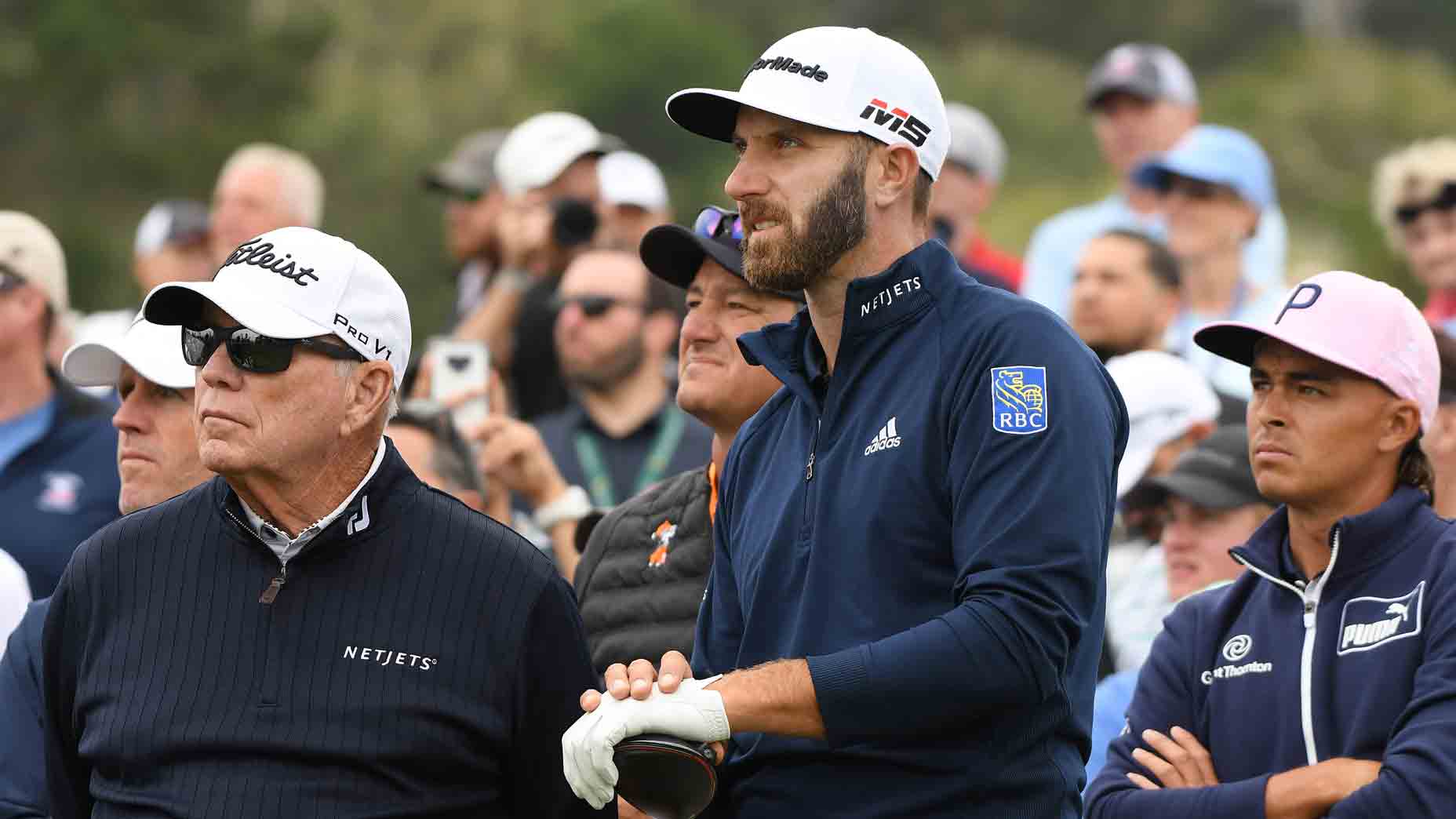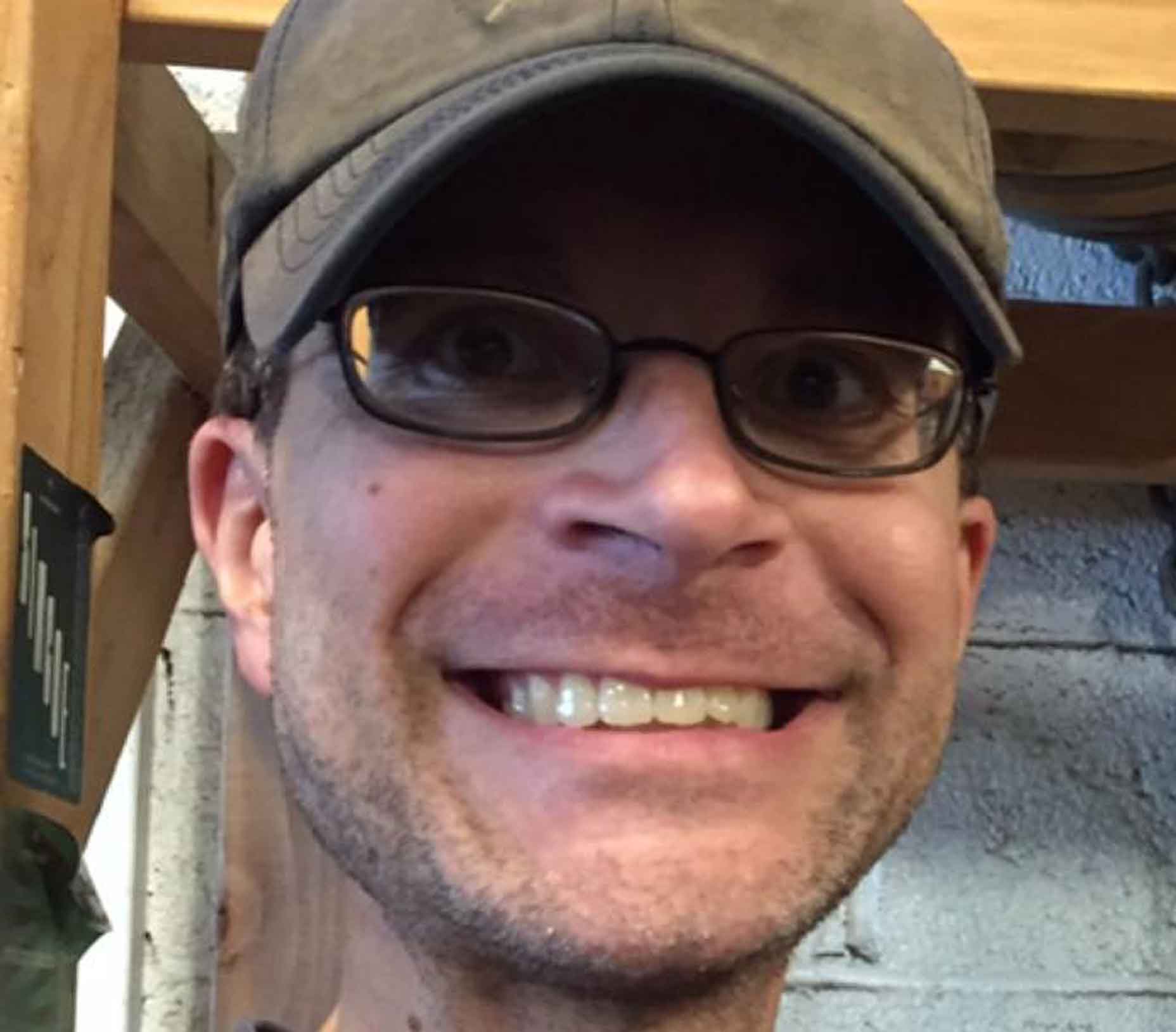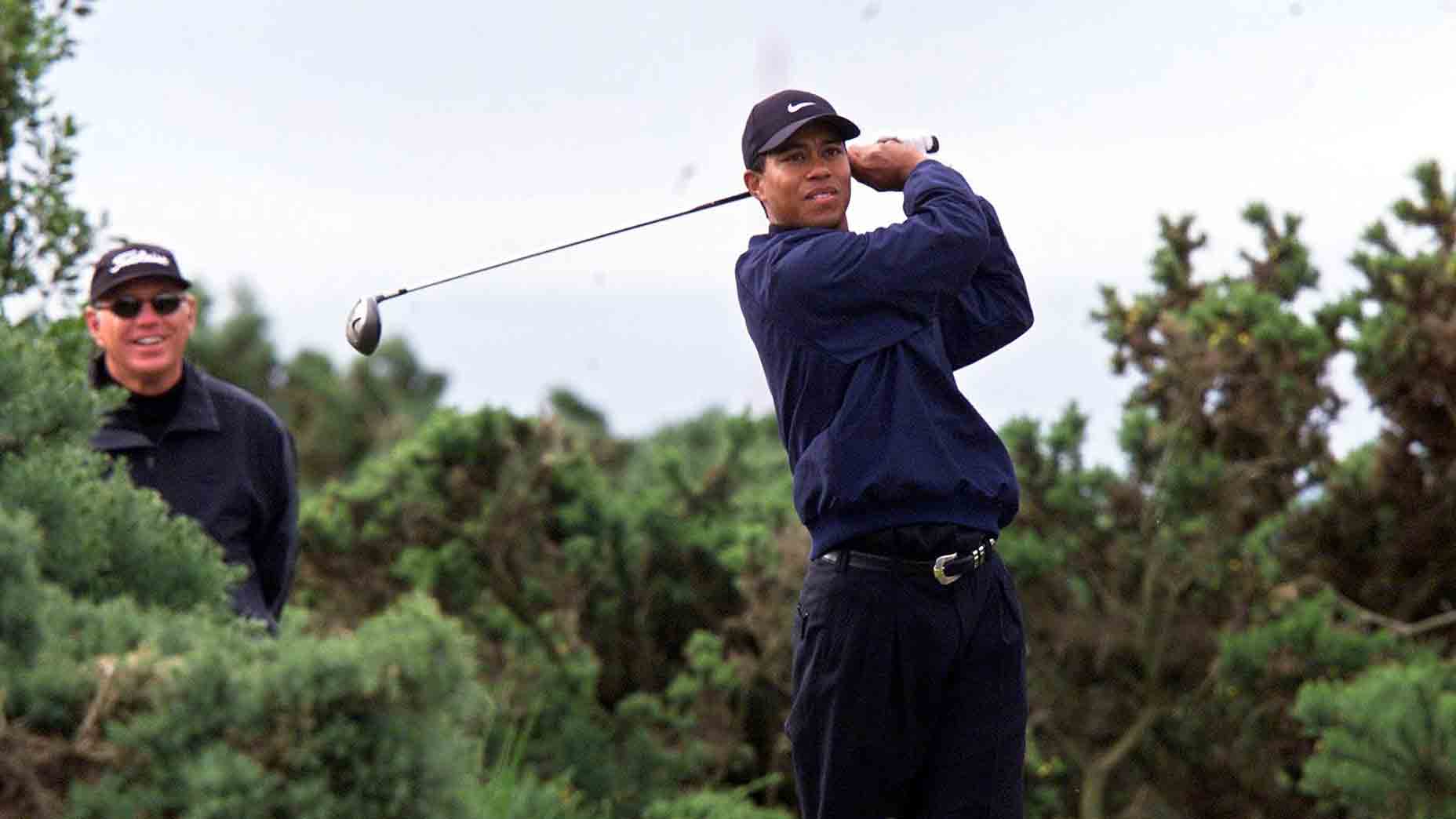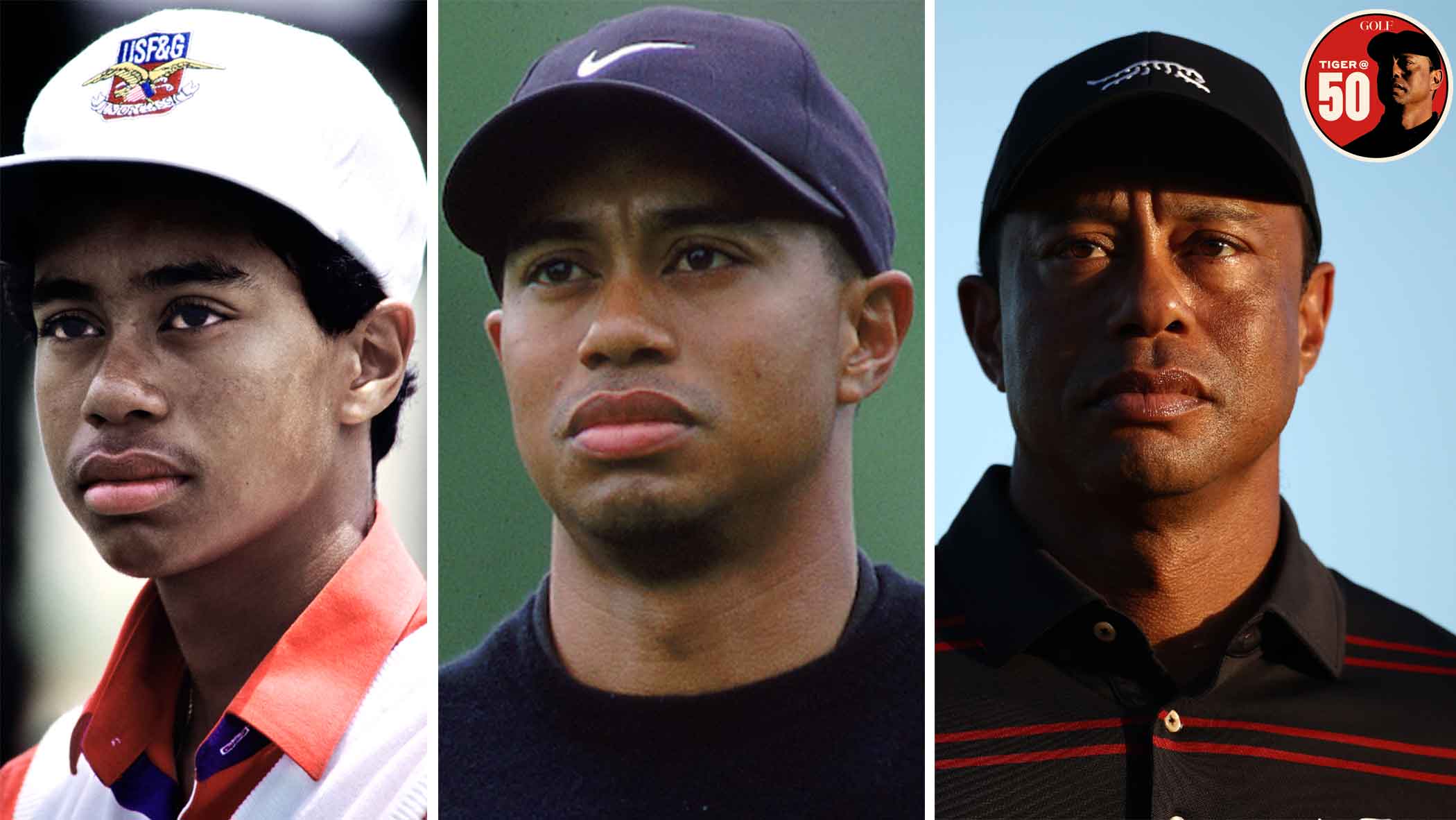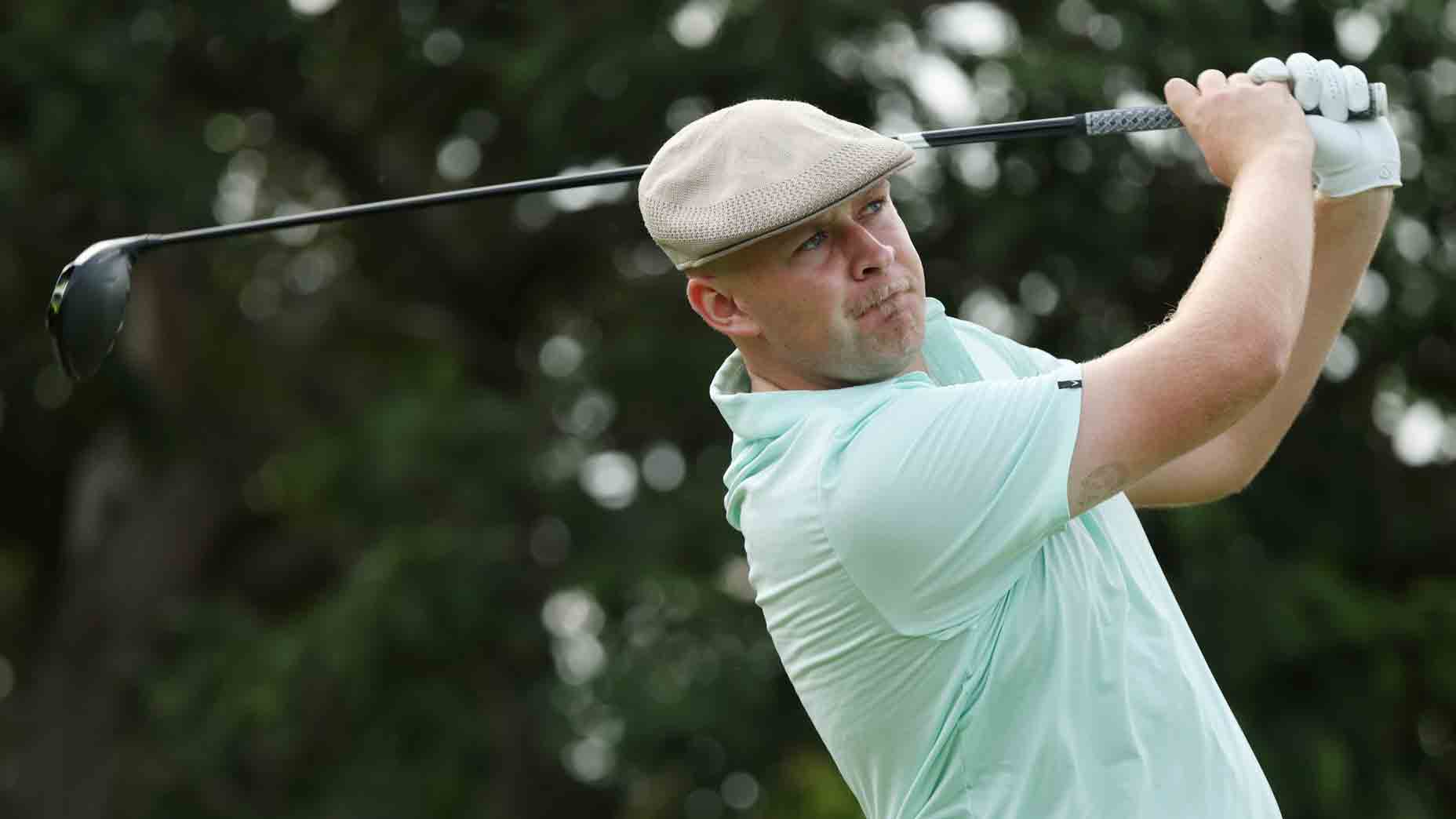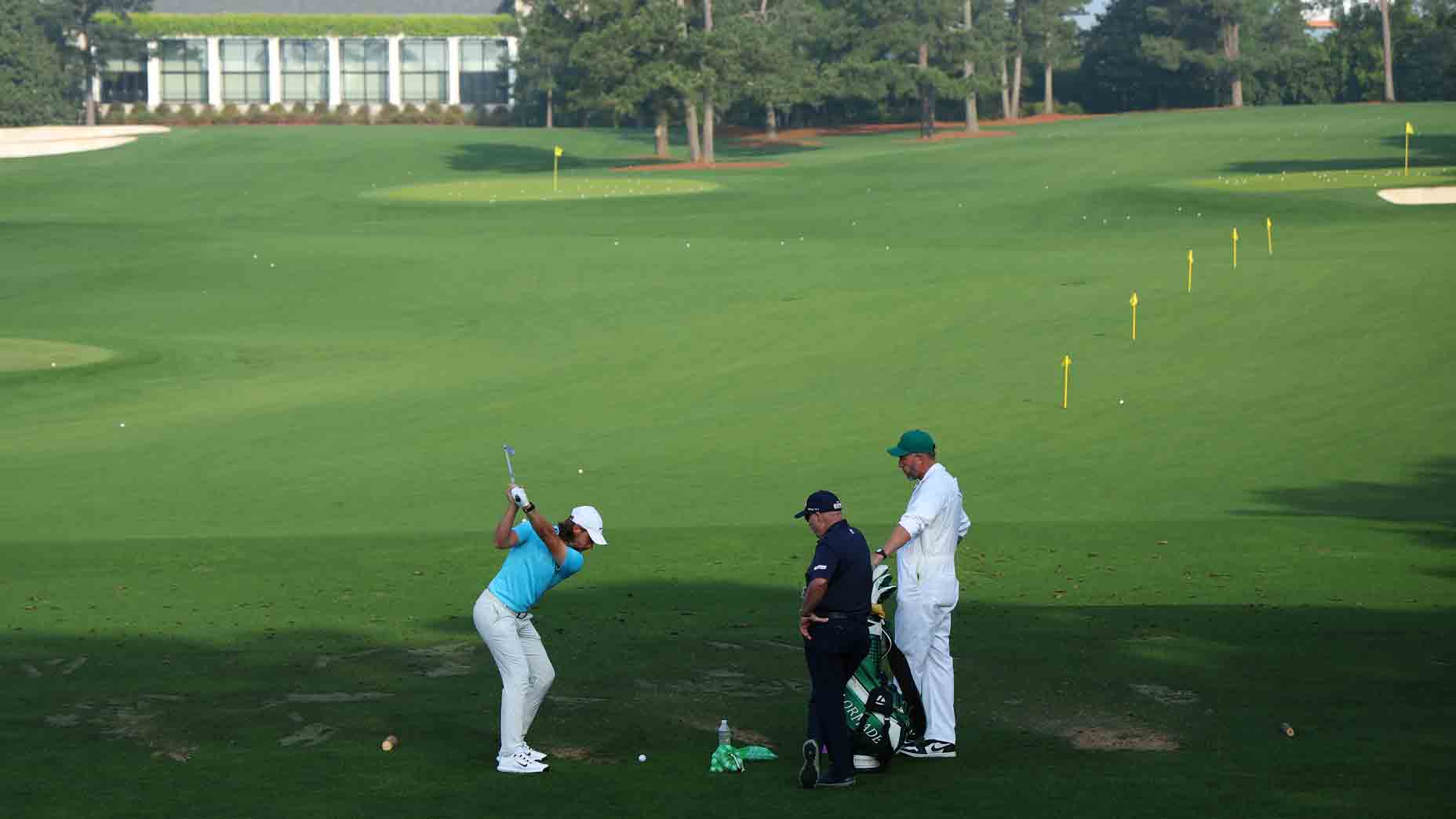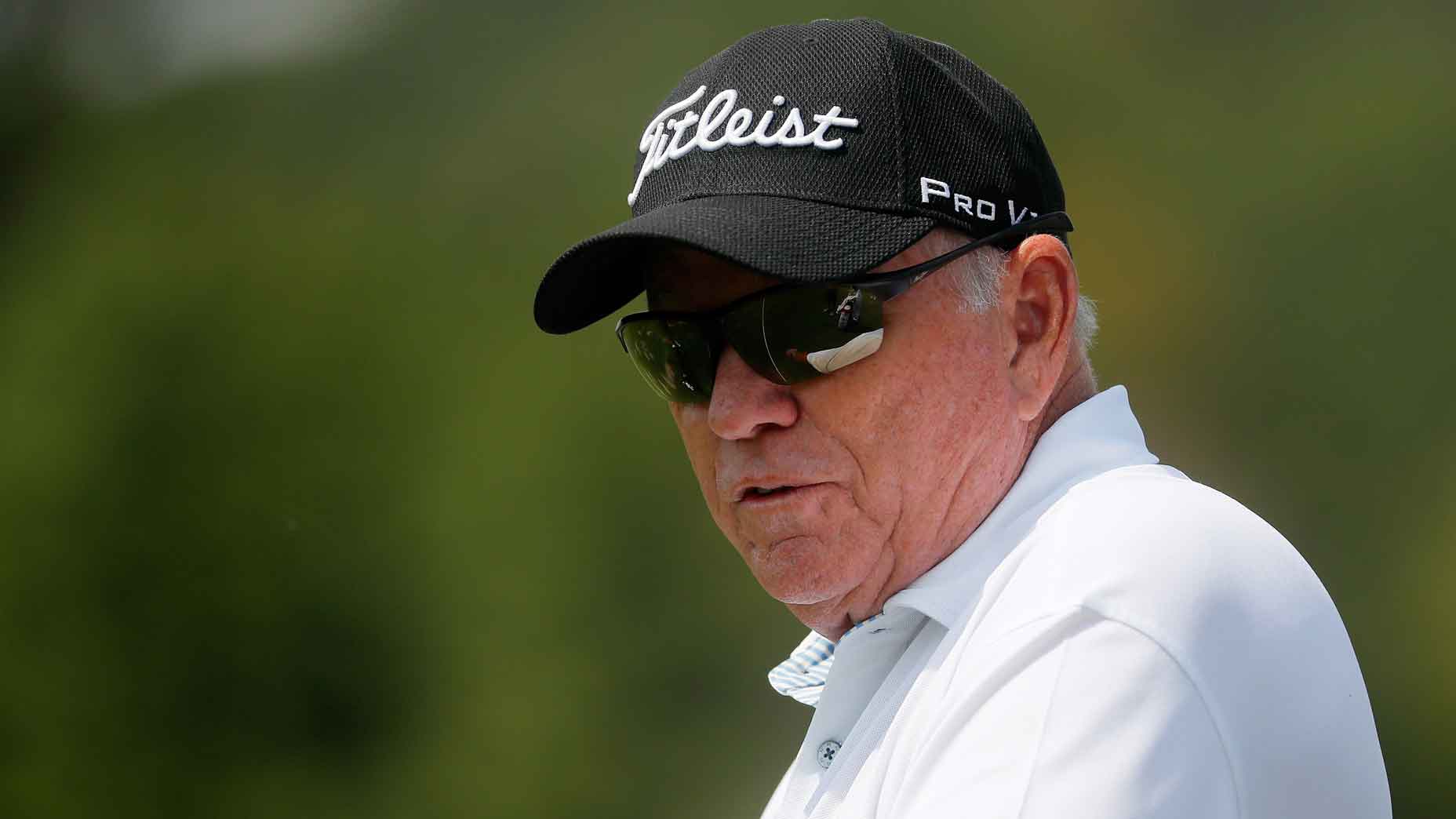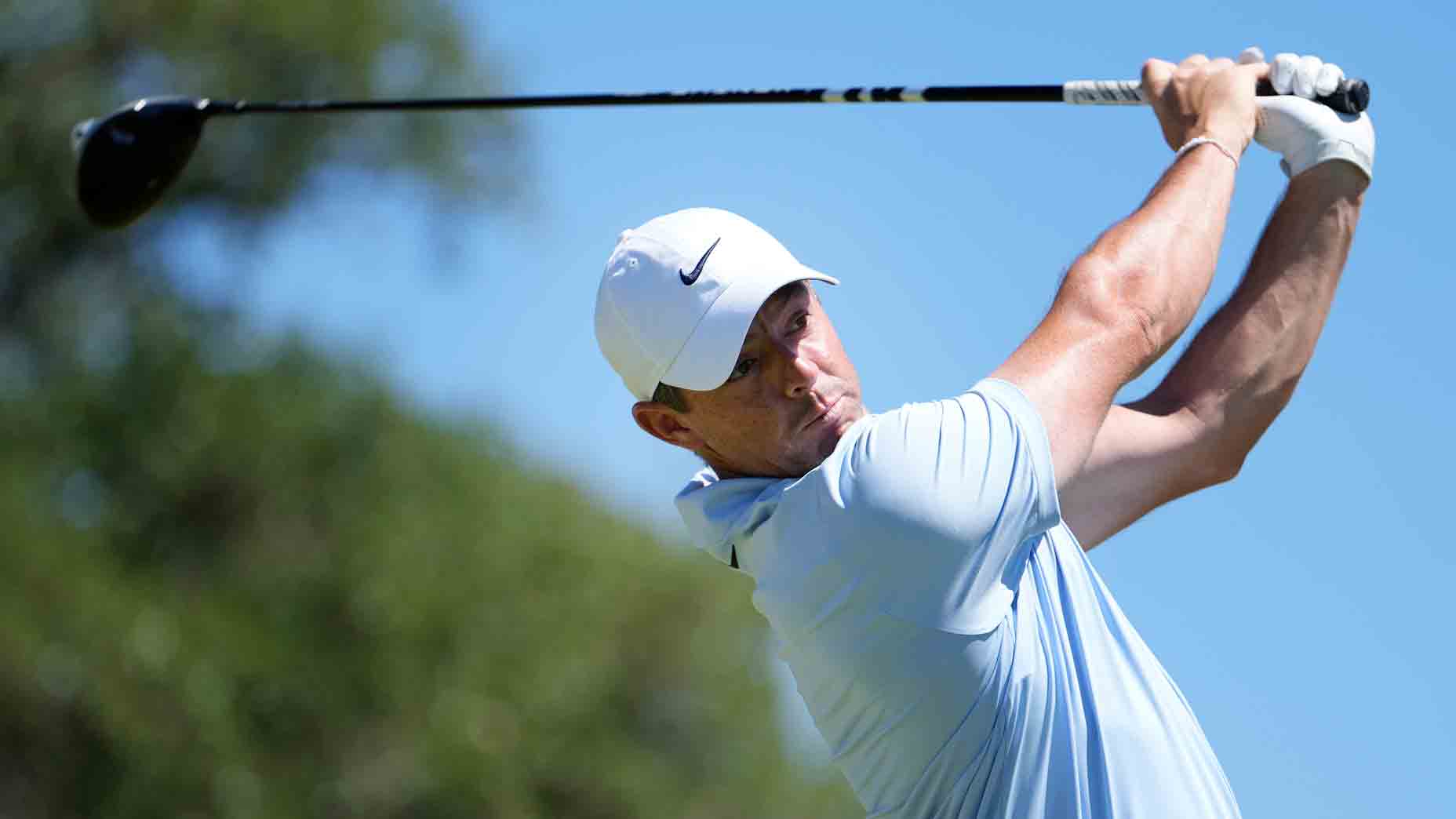Ryan Mouque seemingly was in nirvana.
In front of him, for two days, Butch Harmon was working.
“It was an absolute pinch-myself moment,” he said.
Mouque was describing it over his X social-media account, following a recent two-day visit with Harmon, Tiger Woods’ one-time swing coach and a GOLF Magazine Top 100 Teachers hall of famer. Notably, it was a teacher-teacher session, as Mouque is a top coach based in Australia, and, understandably, an educational one.
So what did Mouque take away?
Ten nuggets, which he also shared over X, and we’re sharing below. It’s here where we also recommend following Mouque on X, which you can do here, and Instagram, which you can do here.
1. ‘Fix the cancer In your golf swing’
“Butch has famously said that golfers should be trying to fix the cancer in their golf swing,” Mouque wrote. “What he means by that phrase is that if you fix the most detrimental part of your swing that’s causing the ball to do what it’s doing or the contact to be what it is, you will likely fix a few other things as a result.
“Don’t be focusing on your takeaway if that’s not the ‘thing’ that is affecting impact. Fix the most important thing (the cancer). If you don’t know what that is, that’s why I’m here to help you.”
Editor’s note: A trickle-down effect. Get to the root of the problem.
2. ‘Practice inside 100 yards’
“Butch was adamant that golfers don’t practice anywhere near enough inside 100 yards,” Mouque wrote. “This includes wedge play, pitching, chipping, bunker play and putting.
“If you were to write down how many hours you practice inside 100 yards versus outside that distance, what would that look like?”
Editor’s note: Good question. How many of us just bang driver for an hour on the range?
I had the pleasure of spending 2 days shadowing & learning from the greatest golf coach we’ve ever seen! This man was an integral part of helping Tiger Woods play the greatest stretch of golf we’ve ever seen during 1999-2002
— Ryan Mouque (@ryanmouquegolf) October 6, 2024
Here are 10 things I learned from Mr Butch Harmon that… pic.twitter.com/HOhs3E8ip2
3. ‘What matters when trying to make a change?’
“I watched Butch coach multiple players in the two days I was with him, and he said the same thing to every student: Where the ball goes and how far it goes DOES NOT MATTER when trying to make a swing change,” Mouque wrote. “You must learn the movement first, then worry about the ball and how far it’s going.
“Of course, once you understand the movement and can perform it at slow speeds, the ball then can be used as feedback as to whether you made a good or poor move. As you get used to the new movement, you can add speed to the swing, and distance then becomes important.
“Butch made Tiger do hundreds/thousands of pause/slow swings when Tiger changed his swing.”
Editor’s note: Trust the process.
4. ‘Butch will tell you how it is’
“Butch will not sugarcoat anything,” Mouque wrote. “He will 100 percent tell you exactly how it is, even if it’s not what you want to hear.
“Of course, he has the results from his players where he can stand there with confidence and say it how it is. If a younger coach did that, the student may walk the other way. Butch was telling me a few stories about players whom he has personally sacked due to their attitude toward what he wanted them to do.
“If you want to work with Butch, you better listen to what he has to say. You don’t argue with him. He has the authority after the tour wins and major championships — he helped his players win.”
Editor’s note: Some tough love doesn’t hurt.
5. ‘He instills confidence in you’
“On the flip side, if you are one of his students and are trying your best, he will say things that ooze confidence,” Mouque wrote. “When you hit a great shot, he will celebrate with you. When you don’t, he’ll explain why and get you doing it the right way.
“He will never make you feel like you aren’t improving. It’s a great skill to be able to get the best out of your players and to have them feeling like they are one swing away from mastering what it is they are trying to do.”
Editor’s note: A pat on the back doesn’t hurt, either.
6. ‘Golf is easy without a ball’
“I heard him say this many times: Golf is easy without a ball,” Mouque wrote. “What he means by this is when working on your swing, most players can perform the movement they are trying to do when there isn’t a ball in front of them.
10 ways to make great contact and get the ball into the airBy: Kellie Stenzel, Top 100 Teacher , Nick Dimengo
“This means that you CAN do the movement you want, but sometimes you need to let go of the result when there’s a ball in front of you. Don’t always be so eager to hit a ball when working on things. Work on your swing without a ball, and as I say to students: ‘Your practice swing is your future swing.’”
Editor’s note: Again trust the process. “Your practice swing is your future swing” is notable — why even take a practice swing if you aren’t going to employ it?
7. ‘You need a clear plan’
“Every student I saw him teach basically had no idea why they were hitting the ball the way they were and had no idea how to fix it themselves,” Mouque said. “They may have THOUGHT they knew the solution, but they didn’t.
“One guy said that the lesson he had that day just cured 15 years of frustration. 15 YEARS!!! (He may have exaggerated, but still, my point remains.)
“If you are a golfer who doesn’t take lessons and has had an issue in your game that never improves year after year, please seek out some help from a coach (me). I want you to enjoy this game — having 15 years of frustration is insane.
“My takeaway from that comment as I was sitting there watching was that this golfer had just tried to do everything on their own and had gotten nowhere. It’s possible he had gotten even worse in his attempt to figure out his issues on his own.”
Editor’s note: Repeatedly doing the same things and expecting different results can drive a golfer to another sport.
8. ‘Swing changes take time’
“Butch told a story about how Tiger wanted to change his swing after 1997,” Mouque wrote. “During 1998, Tiger won only one PGA Tour event, which was due to him working on and changing his swing.
“After a full year of working on his swing and making the changes he wanted, we saw the greatest run golf has ever seen, with Tiger winning seven majors and 20 PGA Tour events between 1999-2002 (I think my math is correct). He also won another five events in 2003.
“The moral of the story is if the GOAT took a full year to make a change, what makes you think you can do it in a week or after a couple of lessons? Be realistic and understand that changes take time. Also, don’t try to tear your swing apart — you won’t be able to. Just work on the low hanging fruit and the ‘cancer’ in your swing.”
Editor’s note: Be patient. Easier said than done, of course, but know the pay-off is coming.
9. ‘External devices’
“Butch was big on using external devices to make the necessary changes,” Mouque wrote. “Put something in your way and try to avoid it. A box, an alignment stick, etc. It doesn’t always need to be thinking about your elbow or wrist angles. It can be as simple as placing something in the way and trying to avoid it to change the path.”
Editor’s note: Training aids help.
10. ‘Amazing stories’
“Butch has about 10,000 stories and is never short of telling one,” Mouque wrote. “He has played with the likes of President Obama, he plays Augusta a few times a year, obviously can go anywhere in the golf world and is treated like royalty, which he has earned the right.
“There were a ton of stories told that I absolutely cannot repeat. During one, I was filming him as he was telling it, and as he looked up, he quickly told me to stop recording. Haha! That one was definitely not for the internet.”
Editor’s note: Our loss!
